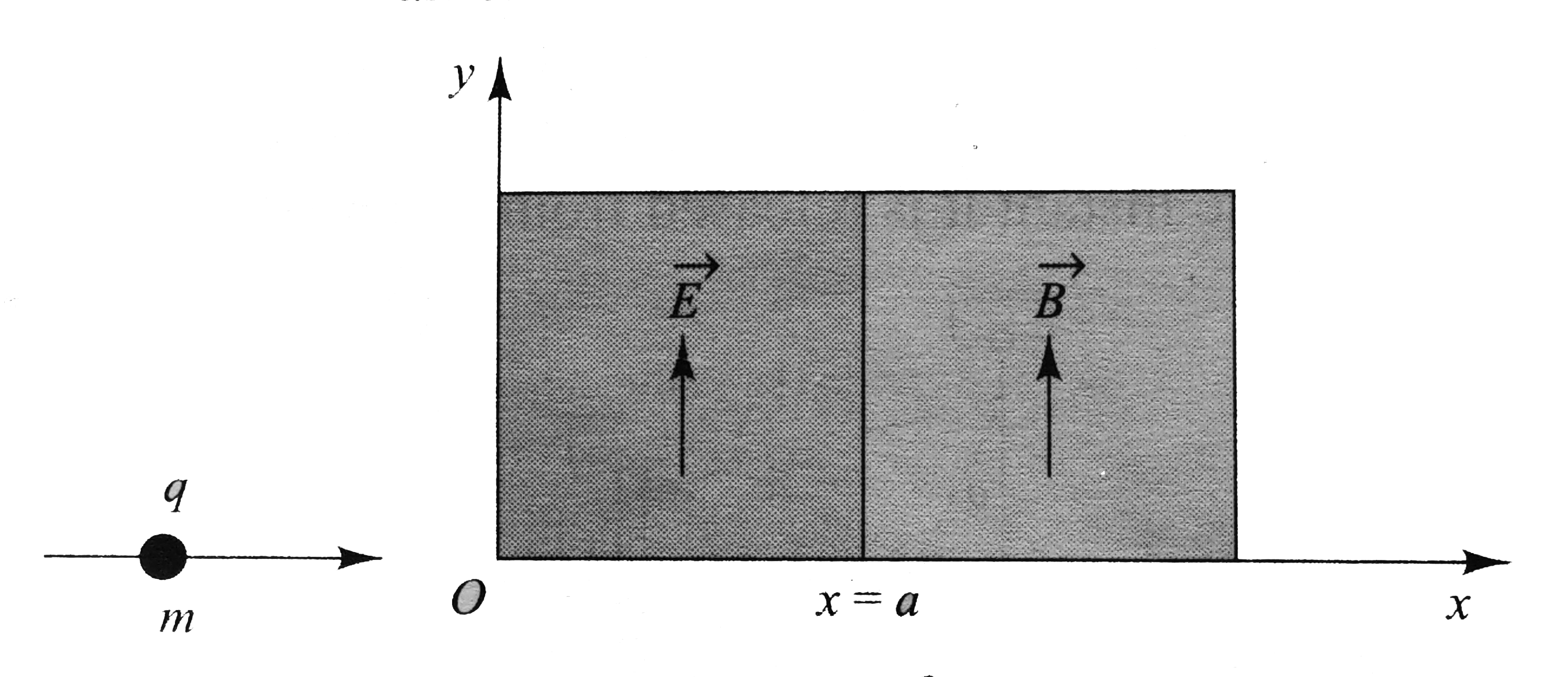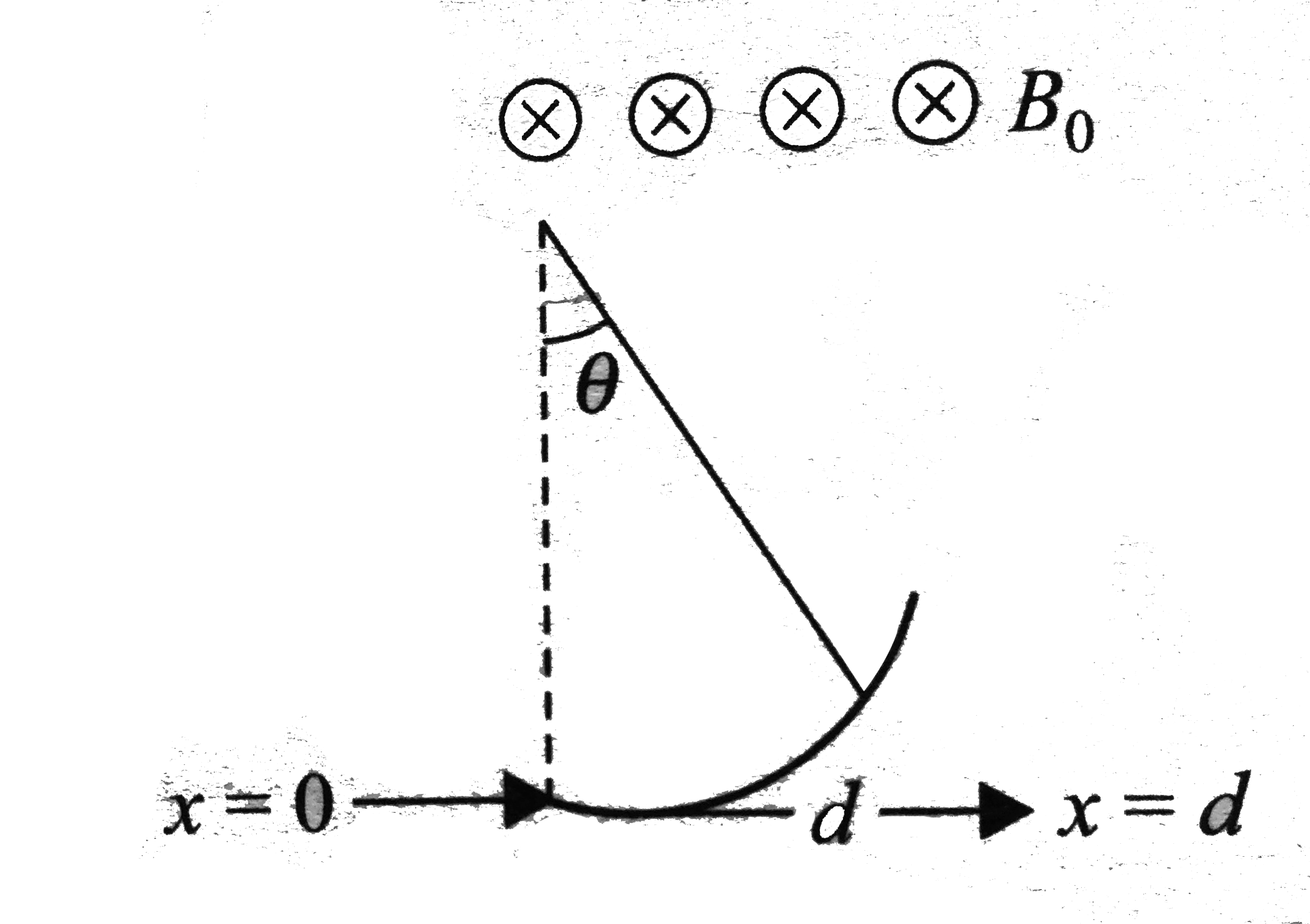A positively charged particle moving along x-axis with a certain velocity enters a uniform electric field directed along positive y-axis. Its
Vertical velocity changes but horizontal velocity remains constant
Horizontal velocity changes but vertical velocity remains constant
Both vertical and horizontal velocities change
Neither vertical nor horizontal velocity changes
The correct Answer is:A
To solve the problem, we need to analyze the motion of a positively charged particle as it enters a uniform electric field. The particle is initially moving along the x-axis, and the electric field is directed along the y-axis. Let's break down the solution step by step.
1. Identify the Initial Conditions:
- The positively charged particle is moving along the x-axis with an initial velocity vx.
- The electric field E is directed along the positive y-axis.
2. Determine the Force Acting on the Particle:
- Since the particle has a charge Q, it will experience a force due to the electric field. The force F can be calculated using the formula:
F=QE
- This force acts in the direction of the electric field, which is the positive y-direction.
3. Analyze the Motion in the y-Direction:
- The force acting on the particle in the y-direction will cause it to accelerate. According to Newton's second law, the acceleration ay in the y-direction can be expressed as:
ay=Fm=QEm
- This means that the vertical velocity vy of the particle will change over time due to this acceleration.
4. Analyze the Motion in the x-Direction:
- In the x-direction, there is no force acting on the particle (since the electric field is only in the y-direction). Therefore, the acceleration ax in the x-direction is:
ax=0
- Since there is no acceleration in the x-direction, the horizontal velocity vx remains constant.
5. Conclusion:
- The vertical velocity of the particle changes due to the acceleration caused by the electric field, while the horizontal velocity remains constant because there is no force acting in that direction.
Final Answer:
- The vertical velocity changes, but the horizontal velocity remains constant.
- The positively charged particle is moving along the x-axis with an initial velocity vx.
- The electric field E is directed along the positive y-axis.
- Since the particle has a charge Q, it will experience a force due to the electric field. The force F can be calculated using the formula:
F=QE
- This force acts in the direction of the electric field, which is the positive y-direction.
- The force acting on the particle in the y-direction will cause it to accelerate. According to Newton's second law, the acceleration ay in the y-direction can be expressed as:
ay=Fm=QEm
- This means that the vertical velocity vy of the particle will change over time due to this acceleration.
- In the x-direction, there is no force acting on the particle (since the electric field is only in the y-direction). Therefore, the acceleration ax in the x-direction is:
ax=0
- Since there is no acceleration in the x-direction, the horizontal velocity vx remains constant.
- The vertical velocity of the particle changes due to the acceleration caused by the electric field, while the horizontal velocity remains constant because there is no force acting in that direction.
- The vertical velocity changes, but the horizontal velocity remains constant.
Topper's Solved these Questions
- ELECTRIC CHARGES AND FIELDSBOOK - AAKASH SERIESCHAPTER - ELECTRIC CHARGES AND FIELDSEXERCISE - Exercise-II
56 Videos
- ELECTRIC CHARGES AND FIELDSBOOK - AAKASH SERIESCHAPTER - ELECTRIC CHARGES AND FIELDSEXERCISE - Practice Exercise
57 Videos
- ELECTRIC CHARGES AND FIELDSBOOK - AAKASH SERIESCHAPTER - ELECTRIC CHARGES AND FIELDSEXERCISE - Assess Your Self
13 Videos
- DUAL NATURE OF RADIATION AND MATTERBOOK - AAKASH SERIESCHAPTER - DUAL NATURE OF RADIATION AND MATTEREXERCISE - PRACTICE EXERCISEX
42 Videos
- ELECTRIC FIELD AND POTENTIALBOOK - AAKASH SERIESCHAPTER - ELECTRIC FIELD AND POTENTIALEXERCISE - PROBLEMS (LEVEL-II)
26 Videos
Similar Questions
A particle of mass m carrying a positive charge q moves simple harmonically along the x-axis under the action of a varying electric field E directed along the x-axis. The motion of the particle is confined between x=0 and x=2l. The angular frequency of the motion is ω. Then which of the following is correct ?
View SolutionA positive point charge (q) is projected along (+x) axis with some velocity from origin, electric field is directed along (y) axis E=E0(ˆj) Find trajectory of charge in form of x.
View SolutionA positively charged particle is moving along the positive x-axis in a unifom electric field→E=E0ˆj and magnetic field →B=B0ˆk (where E0 and B0 are positive constants), then
View SolutionA positively charged particle moving due east enters a region of uniform magnetic field directed vertically upwards. The partical will be
View SolutionA positively charged particle, having charge q, is accelerated by a potential difference V. This particle moving along the x-axis enters a region where an electric field E exists. The direction of the electric field is along positive y-axis. The electric field exists in the region bounded by the lines x=0andx=a. Beyond the line x=a (i.e., in the region x>a), there exists a magnetic field of strength B, directed along the positive y-axis. Find

a. at which point does the particle meet the line x=a.
b. the pitch of the helix formed after the particle enters the region x≥a. (Mass of the particle is m.)
View SolutionEquipotential surfaces associated with a uniform electric field along positive x-axis are planes parallel to
View SolutionA charged particle moving along +ve x-direction with a velocity v enters a region where there is a uniform magnetic field B0(−ˆk),omx=0→x=d. The particle gets deflected at an angle θ from its initial path. The specific charge of the particle is

View SolutionA moving charged particle q travelling along the positive X-axis enters a uniform magnetic field B. When will the force acting on q be maximum?
View SolutionA positively charged particle is moving along the positive X-axis.You want to apply a magnetic field for a short time so that the particle may reverse its direction and move parallel to the negative X-axis.This can be done be applying the magnetic field along.
View SolutionA proton is moving along the negative direction of X-axis in a magnetic field directed along the positive direction of Y-axis. The proton will be deflected along the negative direction of
View Solution
